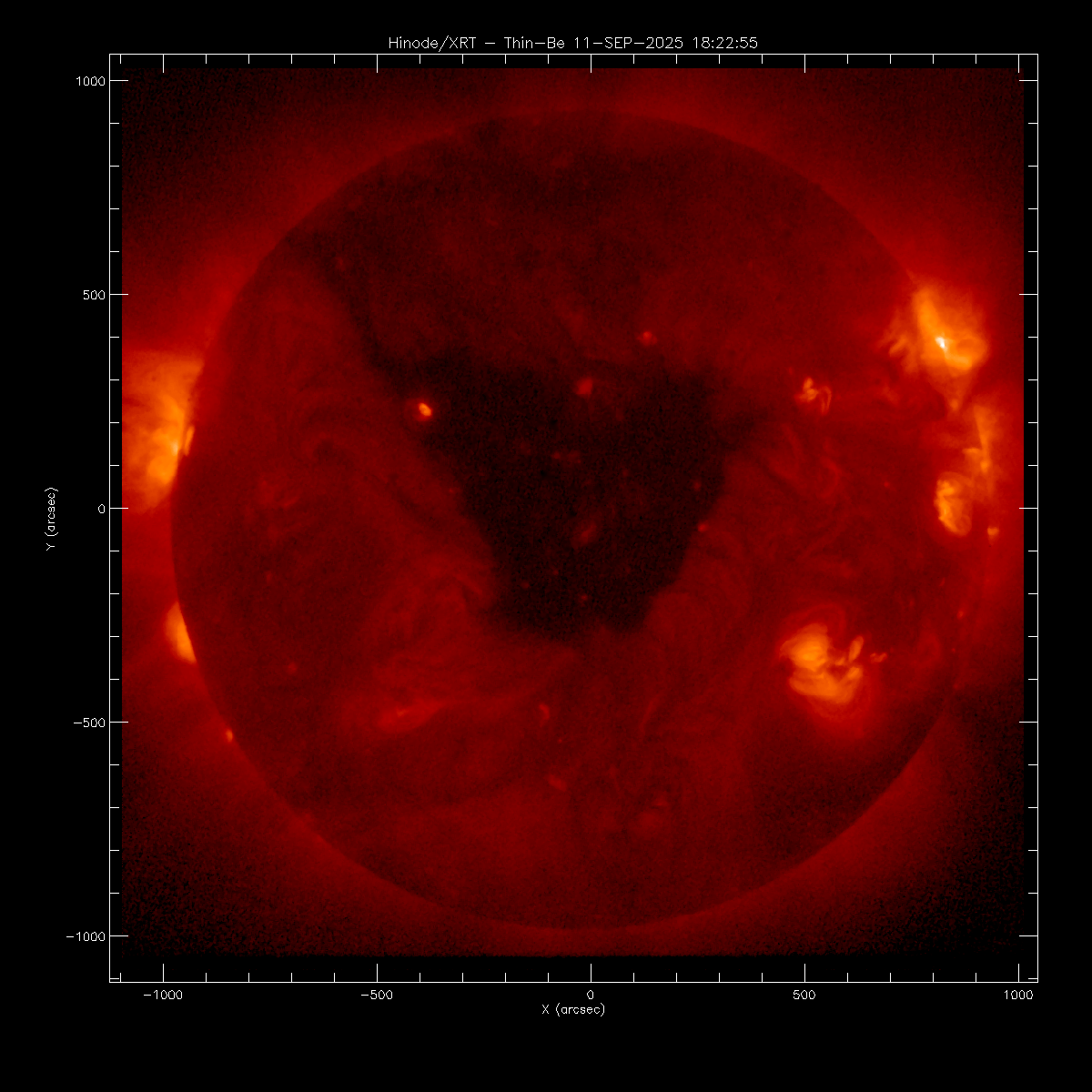
Do you see the butterfly on the Sun? Click the image to watch a movie of the Sun at this time or click here for the youtube link.
Solar Butterfly: A Uniquely Shaped Coronal Hole
|
On September 6th, a curiously shaped coronal hole rotated onto the Sun. Do you see a butterfly? As the Sun transitions from high to low activity, large gaps known as coronal holes appear in the solar corona. These regions are visible in extreme ultraviolet (EUV) and soft X-rays where the solar magnetic field opens into space. The open magnetic field patches create a few unique phenomena. The most obvious are the gaps in coronal plasma, but a not so visible impact is the acceleration of solar wind, aka coronal hole High Speed Stream (HSS). Interplanetary particles in front of the HSS compress and become what are known as a co-rotating interaction region (CIR) in the solar wind. If a CIR hits Earth’s magnetosphere, the night sky can light up with aurora. Once this coronal hole butterfly rotated far enough, its CIR (density spike) and HSS (increase of solar wind) impacted Earth (interactive data of Earth’s magnetic field and solar wind measurements found here). As a result, many northern regions of the continental U.S. were treated to auroras visible on the northern horizon. This picture was taken in Cody, WY on Sunday Sept. 14, 2025 during a class 2/3 geomagnetic storm. So, you don’t need to have a coronal mass ejection (CME) to have aurora! Since the corona emits light in the soft X-ray band, coronal holes are observable with Hinode’s X-Ray Telescope (XRT). The video you see here is a composite video, long and short exposure images, created with Al-poly, a commonly used filter by the XRT team. Keywords: Coronal Hole, Full Disk Filters: Al-Poly |
(Prepared by Rhiannon Fleming)
The XRT instrument team is comprised of SAO, NASA, JAXA, and NAOJ.
| Back | Archive | Next |